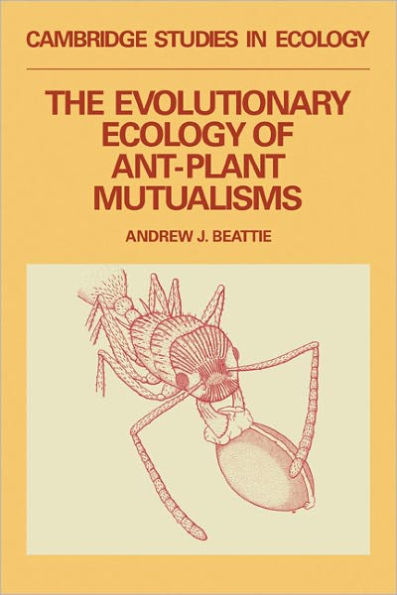The Evolutionary Ecology of Ant-Plant Mutualisms
Mutualistic interactions between ants and plants involve rewards offered by plants and services performed by ants in a mutually advantageous relationship. The rewards are principally food and/or nest sites, and ants in turn perform a number of services for plants: they disperse and plant seeds; they protect foliage, buds, and reproductive structures from enemies such as herbivores and seed predators; they fertilize plants with essential nutrients; and they may sometimes function as pollinators. In this book, initially published in 1985, Professor Beattie reviews the fascinating natural history of ant–plant interactions, discusses the scientific evidence for the mutualistic nature of these relationships, and reaches some conclusions about the ecological and evolutionary processes that mold them. This important work explores the natural history, experimental approach, and integration with contemporary evolutionary and ecological literature of the time will appeal to a wide variety of biologists.
1020765524
The Evolutionary Ecology of Ant-Plant Mutualisms
Mutualistic interactions between ants and plants involve rewards offered by plants and services performed by ants in a mutually advantageous relationship. The rewards are principally food and/or nest sites, and ants in turn perform a number of services for plants: they disperse and plant seeds; they protect foliage, buds, and reproductive structures from enemies such as herbivores and seed predators; they fertilize plants with essential nutrients; and they may sometimes function as pollinators. In this book, initially published in 1985, Professor Beattie reviews the fascinating natural history of ant–plant interactions, discusses the scientific evidence for the mutualistic nature of these relationships, and reaches some conclusions about the ecological and evolutionary processes that mold them. This important work explores the natural history, experimental approach, and integration with contemporary evolutionary and ecological literature of the time will appeal to a wide variety of biologists.
137.0
In Stock
5
1

The Evolutionary Ecology of Ant-Plant Mutualisms
196
The Evolutionary Ecology of Ant-Plant Mutualisms
196
137.0
In Stock

Product Details
| ISBN-13: | 9780521252812 |
|---|---|
| Publisher: | Cambridge University Press |
| Publication date: | 11/29/1985 |
| Series: | Cambridge Studies in Ecology |
| Pages: | 196 |
| Product dimensions: | 5.98(w) x 9.33(h) x 0.63(d) |
From the B&N Reads Blog
